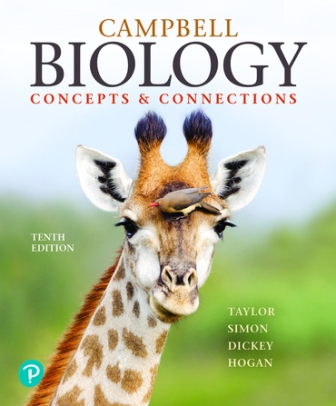Test Bank for Campbell Biology Concepts and Connections 10th Edition Taylor ISBN: 9780135269169
$50.00
Test Bank for Campbell Biology Concepts and Connections, 10th Edition, Martha R Taylor, Eric J. Simon, Jean L. Dickey, Kelly A Hogan, ISBN: 9780136538783, ISBN: 9780136538783, ISBN: 9780135269169
Description
Test Bank for Campbell Biology Concepts and Connections 10th Edition Taylor ISBN: 9780135269169
Test Bank for Campbell Biology Concepts and Connections, 10th Edition, Martha R Taylor, Eric J. Simon, Jean L. Dickey, Kelly A Hogan, ISBN: 9780136538783, ISBN: 9780136538783, ISBN: 9780135269169
Table of Contents
UNIT I: THE LIFE OF THE CELL
1. Biology: The Scientific Study of Life
2. The Chemical Basis of Life
3. The Molecules of Cells?
4. A Tour of the Cell?
5. The Working Cell?
6. How Cells Harvest Chemical Energy
7. Photosynthesis:Using Light to Make Food
UNIT II: CELLULAR REPRODUCTION AND GENETICS
8. The Cellular Basis of Reproduction and Inheritance
9. Patterns of Inheritance
10. Molecular Biology of the Gene
11. How Genes Are Controlled
12. DNA Technology and Genomics
UNIT III: CONCEPTS OF EVOLUTION
13. How Populations Evolve
14. The Origin of Species
15. Tracing Evolutionary History
UNIT IV: THE EVOLUTION OF BIOLOGICAL DIVERSITY
16. Microbial Life: Prokaryotes and Protists
17. The Evolution of Plant and Fungal Diversity
18. The Evolution of Invertebrate Diversity
19. The Evolution of Vertebrate Diversity
20. Unifying Concepts of Animal Structure and Function
21. Nutrition and Digestion
22. Gas Exchange
23. Circulation
24. The Immune System
25. Control of Body Temperature and Water Balance
26. Hormones and the Endocrine System
27. Reproduction and Embryonic Development
28. Nervous Systems
29. The Senses
30. How Animals Move
UNIT VI: PLANTS: FORM AND FUNCTION
31. Plant Structure, Growth, and Reproduction
32. Plant Nutrition and Transport
33. Control Systems in Plants
UNIT VII. ECOLOGY
34. The Biosphere: An Introduction to Earth’s Diverse Environments
35. Behavioral Adaptations to the Environment
36. Population Ecology





